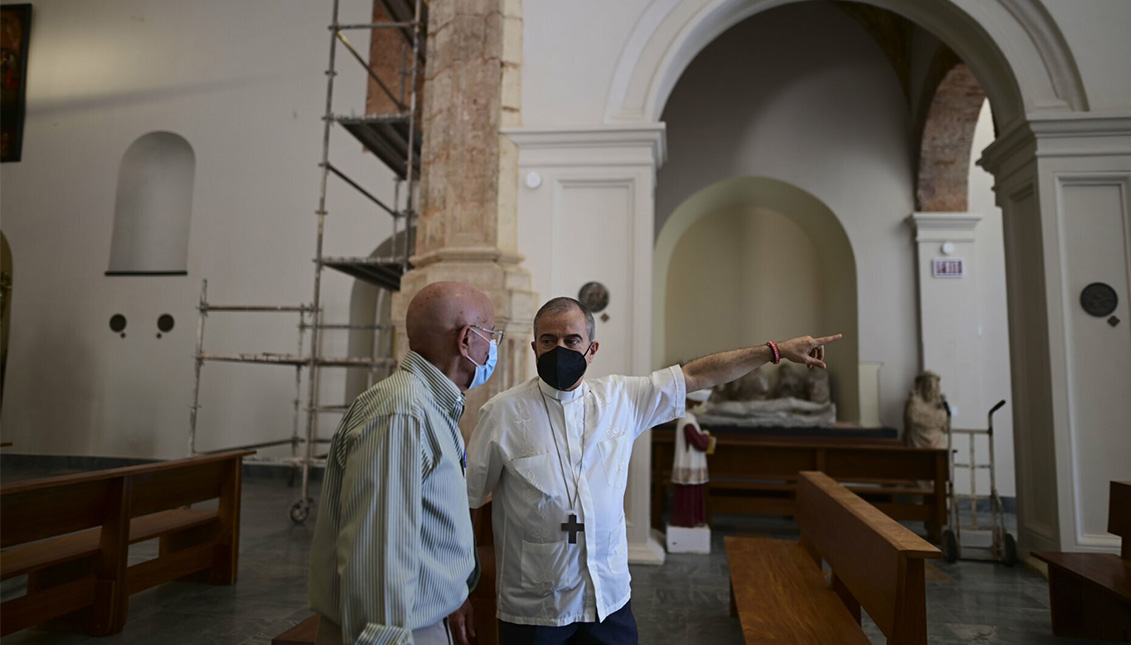
Witnesses, ghosts and scars: The walls of the second-oldest church in the Americas speak again
Almost two decades later, the Church of San José reopened on March 9 after a major philanthropic effort with the help of celebrities such as actor Benicio del…
The Bible says: "Let anyone among you who is without sin be the first to throw a stone.” But the truth is that the story of the Church of San José, the second oldest Spanish church in America, the stones speak, and no one could listen to them for 20 years.
Until finally, after decades of work and three forced interruptions — in 2008, the lime supplier ran out of material. In 2017, Hurricane Maria threatened to uproot it and this past year, the pandemic — San José was finally rebuilt on March 9, 2021.
The birth of the church is not exempt from its own dark side, nor is the colonization of Puerto Rico by the Spanish empire.
San José began to be built in 1532 as a Dominican convent on land donated by the explorer Juan Ponce de León, and was originally an indigenous settlement. The Spanish priest Bartolomé de Las Casas, who denounced the abuses of the Spanish colonists against the indigenous people from the time of his arrival in America, lived there.

Later, San José served as a refuge during an attack by Taino settlers, and was also the first high school in Puerto Rico, only to be hit by a cannonball during the Spanish-American War of 1898, when the island became a colony of the United States.
Even so, the church stood for nearly a century, until 1996, when it was forced to close its doors due to serious deterioration — termites and tree roots piercing its gothic nave were among the problems it faced.
The construction of the Church of San José began in 1532 on the site of a former indigenous settlement.
A few years later, businessman Ricardo González decided to restore it with the permission of the archbishop of San Juan, although he never imagined that a personal project that was to take a year to complete would take him two decades. Nor did he imagine that behind the walls of the church they would find a hidden treasure in need of even deeper restoration.
An undertaking, say, of around $11 million needed to save centuries-old murals and works of art, reproduce ancient architectural techniques and almost literally "peel" the walls by stripping away the concrete and using lime according to the original plan.
RELATED CONTENT
However, a number of difficult obstacles hampered the work:
The workers had to learn to make lime themselves due to the scarcity of materials.
Material shortages forced the workers — many from the Dominican Republic — to learn how to make lime themselves, and discarded the use of cement.
"Cement doesn't allow the walls to breathe," San Juan Archbishop Roberto Gonzalez told AP. He also noted that humidity had played a role in the deterioration of the church, which was built near the ocean on top of an indigenous settlement at the highest point of Old San Juan.
Thanks to solidarity and the 2009 founding of the San Juan Monuments Board, donations continued to be raised for its construction. Even celebrities such as actor Benicio del Toro joined the appeal for funds when the church was added to the 11 most endangered historic sites on the list of the National Trust for Historic Preservation of the United States.
The symbol of Puerto Rican history will hold its first service after the inauguration on March 19, and Puerto Ricans and foreigners alike will be able to listen to the stones speak, telling the story of the island's history, as its restorers decided to leave parts of the original building uncovered, including the mythical cannonball that hit its walls in 1898.
"We let the church speak to you," concluded architect Jorge Rigau. "Visitors will find witnesses, ghosts, memories, scars."











LEAVE A COMMENT: